Technique Tuesday:
10 Important Safety Tips for Gymnasts at any Level
By Ashlyn Kershner
Gymnastics is, by no account, the world’s safest sport. There is all sorts of risk involved when you flip and jump and swing several feet off the ground on a bar or beam, or when you run as fast as you can toward a stationary object, or when you do a front skill with a blind landing (when you can’t see the ground as you approach it). This risk comes with the territory of the sport, but it is also part of why the sport can be so rewarding. The sense of accomplishment that comes from conquering a seemingly impossible skill is indescribable. However, because of the risk of injury, safety measures are absolutely paramount in a sport like gymnastics, and we take your safety very seriously here at Viking Gymnastics and Dance. Here are ten crucial safety tips we practice at Viking at every level of gymnastics, from tots to team.
-
Use correct matting!
Mats are so, so important in gymnastics. They cushion falls and lessen impact on joints like knees and ankles. Without mats, gymnasts would have to land on hard surfaces, and that would be infinitely more dangerous! Whenever practicing any gymnastics skill, make sure you are over a mat or gymnastics carpet.
Mats are super important; they line the floor under all apparatuses!
-
Always have an instructor present!
Coaches and instructors are here to keep you safe when practicing gymnastics, not just to critique your form and technique. Even when they are not spotting you directly, coaches have an eye out to make sure you are practicing skills safely.
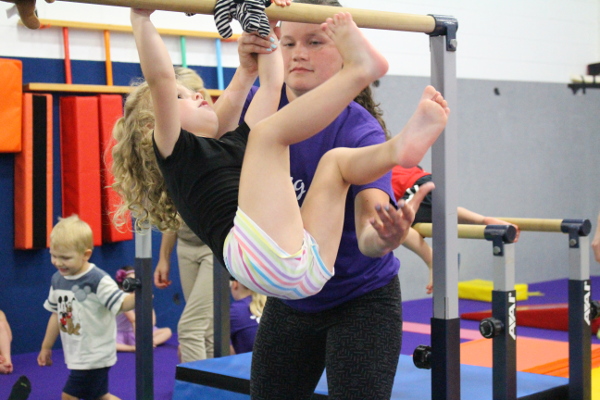
Coach Kerry helps a friend with some leg lifts, so our friend doesn’t fall down!
-
Never try a new skill without supervision!
In addition to making sure you practice the skills you already know safely, coaches can tell you when it’s time to make a skill harder or work on a new skill. You should never try a new skill by yourself without a coach’s permission. If you attempt a skill that you are not yet prepared to do correctly, you risk hurting yourself or others. Trying new things is of course one of the biggest ways you can improve your gymnastics abilities, but always make sure to do so with the A-Okay from your coach!
-
Don’t run around the gym!
Obviously, a lot of gymnastics, especially tumbling and vault, requires running. But when you’re not running for a skill or because a coach told you to, running around the gym (from event to event, for instance) can put you and your friends at risk. There are lots of obstacles in the gym, from mats to walls to bar supports. If you are not paying enough attention, it is easy to trip on things and fall or to run in the way of someone who is about to do a skill, causing a collision. Luckily, these are super avoidable issues that we can prevent by simply walking safely around the gym when going from one place to another.
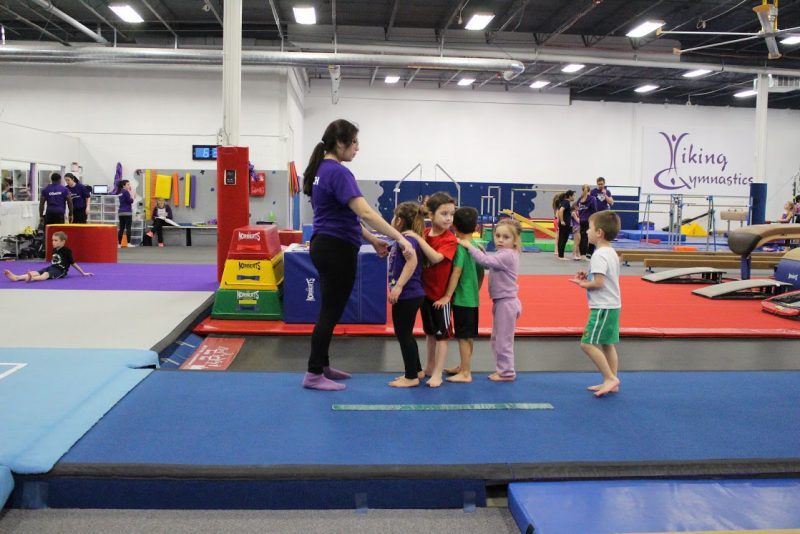
A class of young friends safely follows Coach Maythe in a nice, straight line to walk across the gym.
-
Watch out for other gymnasts!
Always, always, always keep your eyes open and stay aware of your surroundings in the gym. There are people everywhere in the gym, and even the most careful of us can sometimes fail to notice someone about to tumble where we’re walking. The best way to prevent this is to be responsible for your own awareness. Always assume that other people do not notice you, so that you always notice them. This stops all sorts of accidents and collisions!
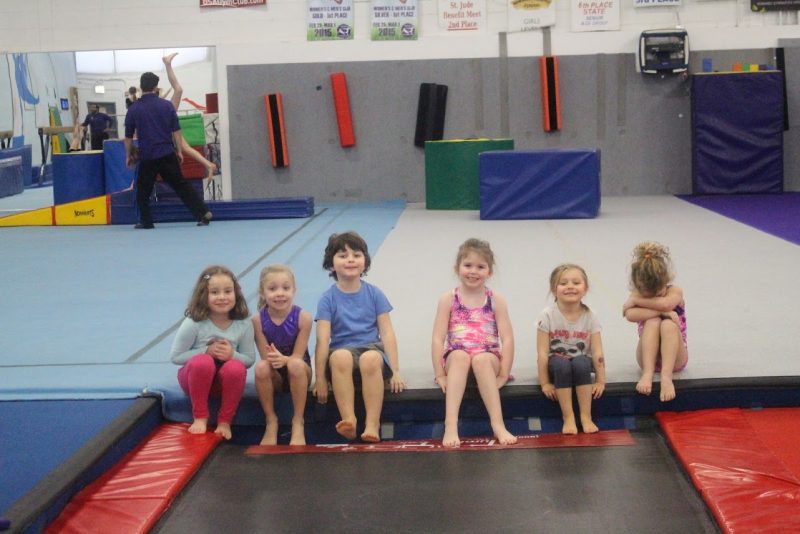
This class is waiting patiently for their turn on tumble track!
-
Listen to your coaches!
Coaches have already been mentioned twice, but it cannot be stated enough that listening to your coaches is one of the most important parts of your gymnastics education. Your coaches are experts in safety and proper technique and are always looking out for their gymnasts’ safety. If they tell you not to jump up and down, it’s to protect you from accidentally jumping on someone. If they tell you to talk more quietly (or not at all), it is so that they (and you!) can pay better attention to their (and your!) surroundings. If they tell you to tuck your head in, it’s so that you do not rest all of your weight on your head.
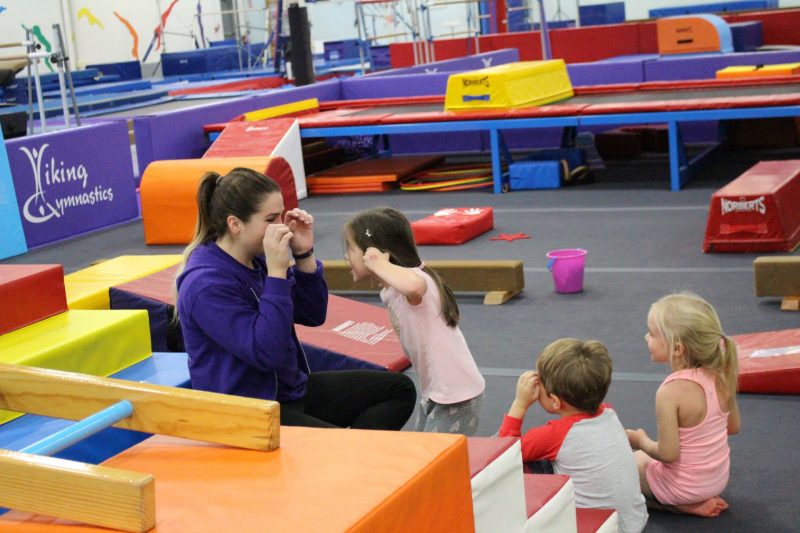
Some young friends listen as Coach Carly gets ready to explain their stations in the tots area.
-
Stay off your head!
Speaking of tucking your head in, this is an important safety rule all on its own! Going upside down is a key part of gymnastics, but if you support all your weight on your head, you are putting too much pressure on your neck, and neck injuries are no joke. Even if it is just a bridge where you can’t quite push your head off the floor, it is important to ask a coach for help. That little bit of pressure can make your neck surprisingly sore, which at the very least, is unpleasant and at the most can cause lasting damage. Whether it is bridges, handstands, or even headstands, always make sure you’re supporting the majority of your weight on your hands.
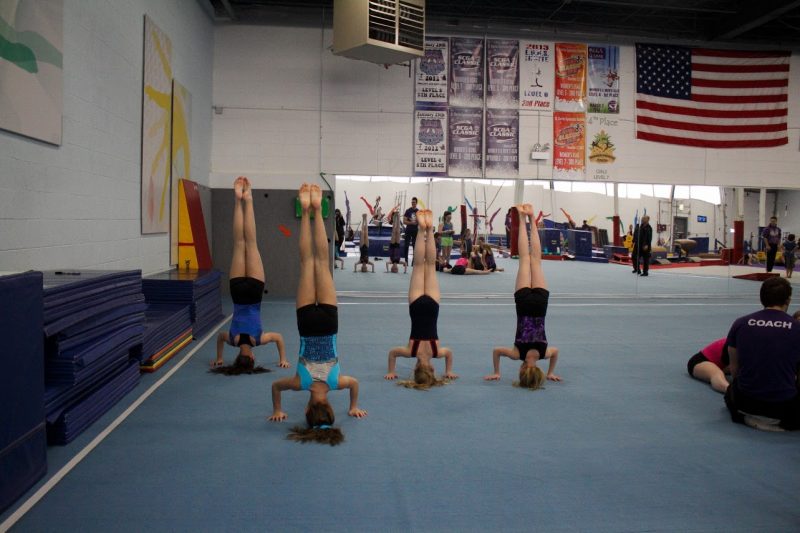
Even when doing headstands, gymnasts use their hands to support the bulk of their weight, protecting their necks.
-
Stretch before practice, warm-up before stretching!
This seems like a minor one to a lot of people, especially because young children are often so active that they can just jump in and do a cartwheel or a backbend like it’s nothing, but warming up and stretching are super important at the beginning of practice. Without proper stretching, the muscles may be too tight to perform certain skills, which can lead to strains or pulls, and without proper warm-up, the muscles may be too tight even to stretch. Getting our blood flowing through warm-ups allows us to stretch as effectively as possible, which enables us to perform our skills without hurting our muscles!
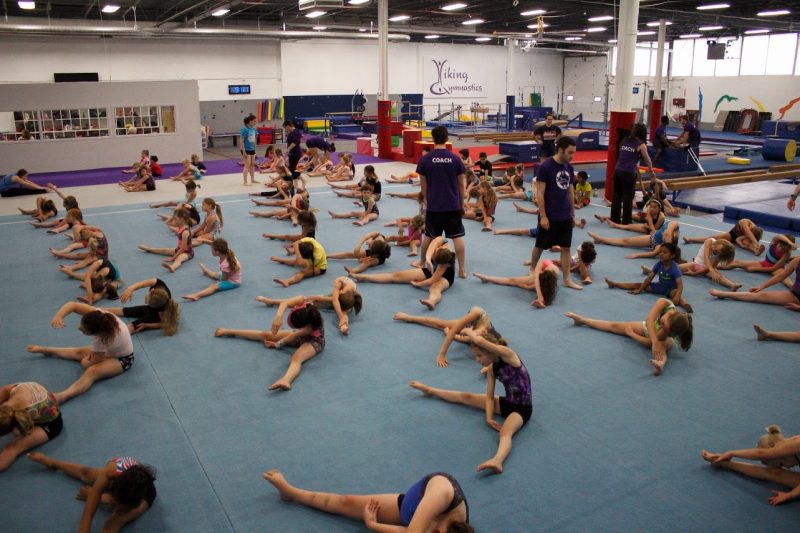
A group of gymnasts stretches before one of Viking’s day camps..
-
If something hurts, tell your coach!
One of the easiest ways to turn a minor injury into a major one is to ignore it. If something hurts a little doesn’t mean you should ignore it. Something, like an ankle, that hurts “just a little” is likely in a weakened state. Without realizing it, you could favor one ankle and end up putting too much weight on the other side and injure that one too. Or you could land something like you normally do, but your already-weakened ankle can’t take the pressure, and ends up in an even worse state. I use ankles as an example because this is particularly true for them (a previously-sprained ankle is much more likely to end up sprained in the future), but it’s true about all pain or discomfort. While often, something minor that hurts really isn’t a big deal and your coach will tell you to work through it, sometimes it may warrant more attention or rest. To be safe, always make sure to inform your coach.
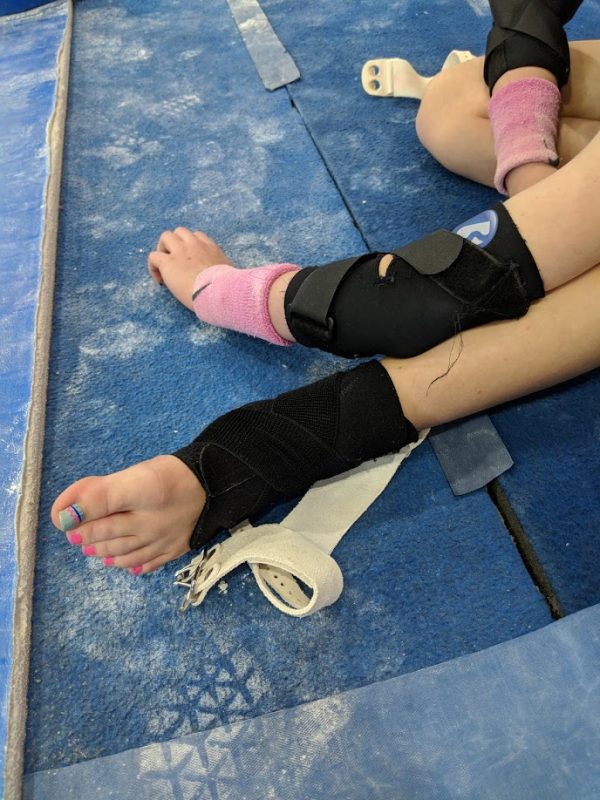
Injuries can worsen if not treated properly. Braces like these can sometimes help! Always talk to your coaches to figure out how best to deal with an injury.
-
Have fun!
This may seem like a silly rule for an article about safety, but a positive attitude is actually very critical to safe gymnastics. If you are feeling discouraged or unhappy, it is possible you will not put your whole energy into a skill, which could cause you to fall. While you certainly cannot be expected to be happy all the time, it is important to try to harness all the positivity you can muster when you are doing gymnastics. Having fun will help you to achieve your biggest goals even faster, because it will help you put everything you have into getting better and better!
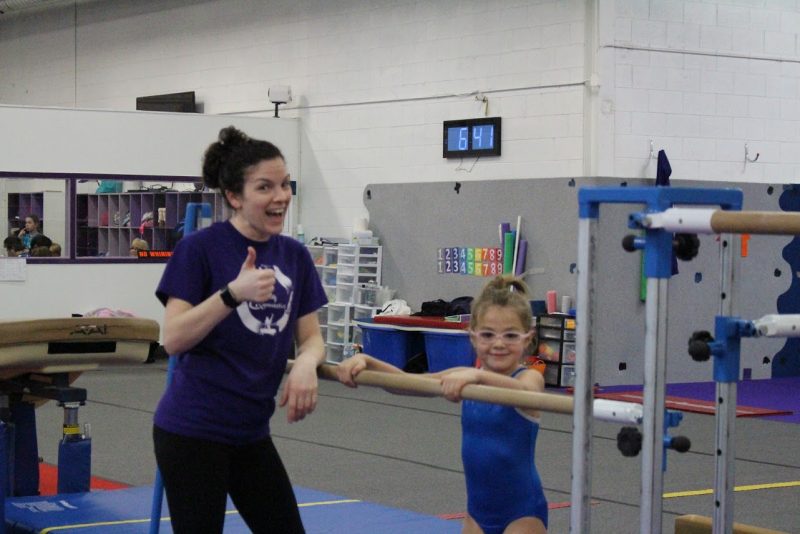
Coach Angie gives a big thumbs up and a smile alongside her gymnast on the star bars.
